西方文明史ppt
《西方文明史》课件

结语
1
西方文明的特点和发展趋势
综合分析了西方文明的特点、优点和不
其他文明与西方文明的互动和影
2
足,并探讨其未来的发展趋势。
响
探讨西方文明与其他文明如何发生互动
和影响,促进了人类文化的多元化。
3
未来的发展和挑战
预测西方文明未来的发展和挑战,例如 人口老化、数字技术和社会不平等。
中世纪西方文明
基督教
探究宗教信仰和礼仪在中世纪时期的重要性。
封建制度
研究欧洲社会的结构、封建经济体系和特权等方面的互动。
清教徒革命
揭示宗教改革和政治变革如何塑造了现代欧洲的主要特征。
近代西方文明
文艺复兴
发现文艺复兴时期欧洲的许多杰 作,如达芬奇手稿和莎士比亚作 品。
工业革命
探究工业革命对技术、社会和经 济的影响以及妇女和儿童工作条 件。
殖民扩张
深入了解帝国主义和文化冲突如 何影响了世界其他地区,如大航 海时代和印度公主。
当代西方文明
1 两次世界大战
分析两次世界大战如何决定了各国的地位和国际秩序。
2 冷战
研究冷战时期的政治和意识形态上的对抗,以及影响和后果。
3 全球化
研究全球化带来的经济、文化和社会问题,以及西方文明面临的新形势。
西方文明史
西方文明悠久而丰富多彩,从早期的古文明到现代的全球化时代,让我们一 起探索它的精彩吧。
早期西方文明
1
史前时期
探讨早期欧洲最早的文化、工艺和艺术,如庞贝古城。
2
古希腊
研究希腊在政治、哲学和艺术领域的卓越成就,如雅典民主和柏拉图哲学。
3
古罗马
深入了解罗马在政治、法律和军事领域的重要贡献,并探讨它的剩余遗产。
《西方文化史》-古典时期讲义课件:第四章古希腊文明

第四章古希腊文化古希腊人思维方式、世界人生观——“人是万物的尺度”古希腊人创造的文明是西方人能够从中感觉到自我的最初源头。
把现代西方人与古希腊人联结在一起的是希腊人对人类自身的认识,希腊人是第一个把人置于宇宙中心的民族。
希腊人不再把人视为神碦一时心血来潮创造出来并玩弄于股掌之中的微不足道的对象,也不是帝王可以随便摆布的奴隶。
希腊人逐渐意识到社会问题实际上是人类自身引起的,而且只有人类才能解决。
在希腊人看来,人在这个世界上起着某种极其重要的作用,人不仅在某种程度上掌握着自己的命运,而且对自身的行为负有道德上的责任。
这样对于人所生活的世界而言,人可谓是世界万物中最了不起的物体。
在这一思想的影响下,到公元前5世纪希腊哲学家普罗太戈拉德意终于庄严地呼喊出了“人是万物的尺度”这一具有划时代意义的口号。
巨大的创造性和成就——西方文明的一个最重要源头新的思维方式、新的世界人生观使得希腊人能够在所有的创造性领域驰骋,在几百年塑造自身文明的过程中,他们所达到的高度在一些人看来至今尚无人能够企及。
希腊诗歌、文学、雕塑、艺术以其精湛和高雅成为后世作品的楷模和评判准则。
西方近代文明的一切胚胎:政治制度、哲学思想、文艺样式、民主观念可以说均孕育于古希腊文明。
西方人从希腊人那里继承了政治模式和具体实施办法,对人的行为的看法,哲学严谨性的追求,科学探究的方法,审美批判标准等。
简言之,希腊人以人为本的思想和在文化上取得的成就为西方文明奠定了基础。
正是在这个意义上,古希腊文明成了西方文明的一个最重要源头。
第一节历史:由海洋孕育的民族古希腊指的是一个文化地理概念,所有使用古希腊语的民族都包括在内。
这样古希腊历史主要是指使用希腊语民族所创造的历史。
古希腊文明史的最初发源地是爱琴海一带以及邻近的希腊半岛。
那是一个由众多礁石、岛屿、半岛、海湾、港口组成的区域。
根据文明出现的地理位置,这一时期被称作“爱琴文明”的时期(约公元前2000年至公元前1100)。
最新版西方文明史精品课件导论课件
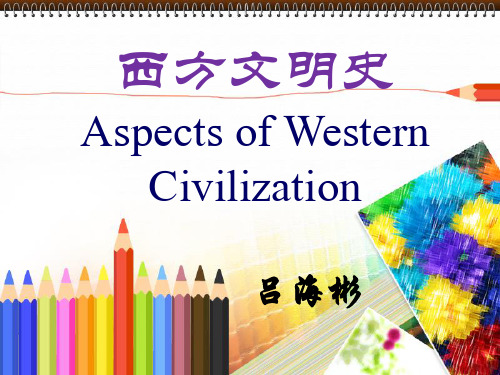
Stages of Social Evolution
Stage of civilization
Civilization & Culture
Western culture sometimes equated with Western civilization or European civilization, refers to cultures of European origin.
The Tigris River The Euphrates River Mesopotamia = Between-rivers
底格里斯河 幼发拉底河 (希腊语指) 两河之间的土地
Mesopotamia
4000-1000 B.C.E.
Tigris Euphrates
Mesopotamia, c. 4000-1000 B.C.E. (Bronze Age)
Cradle of Civilization
The The The The Fertile Crescent Mesopotamia Nile Valley Egypt Indus River India Yellow River China
Mesopotamian Civilization 美索不达米亚文明
西方文明史
Aspects of Western Civilization
吕海彬
文 明
Civilization(英) Civilisation(法) Zivilisation(德)
civis-
citizen
2
—— Lewis H. Morgan Stage of savagery Stage of barbarism
优选西方文明史ppt
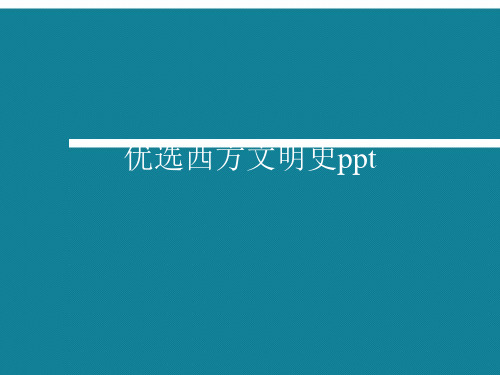
European expansion
Motivated by:
– Need to settle excess population – Search for wealth (trade、mineral sources) – The description about the outside world in
Types of colonialism
• Settler colonialism • Exploitation colonialism • Plantation colonialism • Surrogate colonialism • Internal colonialism
Age of Discovery
• The Church retained much control through religion, and churches were often strongholds against marauders(抢劫者).
• After the separation of the Church into Roman Catholicism and Protestant, many bloody wars and persecution happened within countries.
• This period is also associated with the Commercial Revolution. The late Middle Ages saw reforms in accountancy and banking in Italy and the eastern Mediterranean. These ideas were adopted and adapted in western Europe to the high risks and rewards associated with colonial ventures.
《西方文明史》课件

科学与技术的发展
科学革命
哥白尼、牛顿等科学家的发现,推动了科学技术的飞速发展,为 现代西方文明的形成奠定了基础。
工业革命
蒸汽机、电力等技术革新,极大地推动了西方国家的工业化和现 代化进程。
信息技术革命
计算机、互联网等技术的发展,对现代西方文明产生了深远影响 ,改变了人们的生活方式和工作方式。
全球化与西方文明的影响
西方文明的发展趋势
01
科技创新与数字化转型
随着科技的不断进步,数字化、人工智能等新兴技术正在深刻改变西方
文明的发展轨迹,为经济、文化和社会领域带来新的机遇和挑战。
02
多元化与包容性增长
面对全球化和移民潮的冲击,西方文明正努力实现多元化和包容性增长
,尊重不同文化和背景,促进社会和谐与进步。
03
绿色发展与生态文明
随着全球化的加速和不同文化的交融,西方文明面临来自 其他文明的竞争和质疑,导致文化认同的模糊和传统价值 的削弱。
社会不平等的加剧
贫富差距扩大、阶级固化等现象加剧了社会不平等,引发 了社会紧张和冲突,对西方民主制度和社会稳定构成挑战 。
环境危机与可持续发展
气候变化、资源枯竭等环境问题对西方文明的发展提出了 严峻的挑战,需要寻求可持续的发展模式和绿色转型。
改变了西方世界的面貌。
机械化生产
工业革命实现了从手工劳动向 机械生产的转变,大大提高了 生产效率和生产力。
城市化
工业革命推动了城市化进程, 大量人口从农村涌向城市,形 成了新的社会结构和生活方式 。
贫富分化
工业革命也带来了贫富分化和 社会不平等的问题,成为后来
社会变革的重要原因。
社会与经济的变革
总结词
面对环境危机,西方文明正积极推动绿色发展,实现经济、社会和环境
西方文明课件

斯堪的纳维亚的维金人和匈牙利的马扎尔人侵 入
休·加佩成为法兰克王 奥托为日耳曼和萨克森王 波伊提乌《哲学的慰籍》 爱因哈特《查理曼生平》
西方文明课件
伊斯兰世界
伊斯兰:顺服真主 穆斯林:已顺服者 630年,穆罕默德创教 倭马亚王朝,穆阿维叶(602-680)迁都大马士革 阿拔斯王朝,762年迁都巴格达 塞尔柱突厥帝国,萨拉丁(1137-1193),阿尤布王
人类的历程
西方文明课件
艺术风格
美索不达米亚风格 埃及风格 希腊风格
亚该亚风格 古典风格 希腊化风格
罗马风格
共和国风格 帝国时代风格
西方文明课件
中世纪
500年至1500年,分为三个阶段
中世纪初期:500-1000,频繁的蛮族入侵和 政治混乱,文明岌岌可危,勉强幸存
中世纪中期:1000-1300,稳定而文化鼎盛
录》
新柏拉图主义
普罗提诺(205-270)
法学
-450年,《十二铜表法》
西方文明课件
犹太教与基督教
希伯来人在迦南(2000-1500),与喜克索同宗 希伯来人在埃及(1500-1250) 希伯来人回迦南(1250-1020),摩西十诫 统一的王国(1020-926)以色列王国
扫罗、大卫、所罗门
苏格拉底革命
○ 苏格拉底(470-399):天地万物之中存在着一种永恒的 道德和思想的秩序,美德即知识
○ 柏拉图(427-347),理念是存在的本原,《理想国》 ○ 亚里士多德(384-322),万物皆有目的
西方文明课件
希腊化时代
亚历山大帝国解体(323-307)
安提柯,塞琉古,托勒密三分天下
古典 悲剧
埃斯库鲁斯:《俄瑞斯忒亚》 索福克利斯:《安提戈涅》、《奥狄甫斯王》 欧里庇得斯:《特洛伊妇女)
可修改西方文明史ppt.ppt
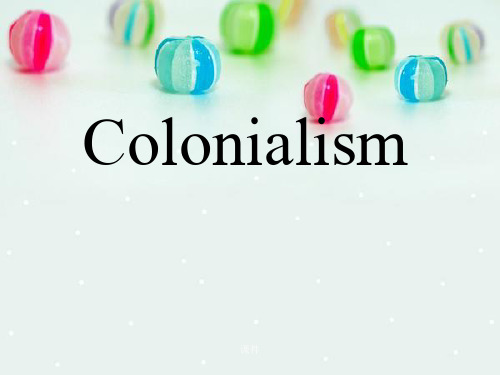
Christianization of the people
课件
Jesuits
• Spain and Portugal are very Catholic • They used their Jesuit priests to convert the
8th Arab) – More resources, a larger population and
strategic locations increased potential military and political strength
课件
Spanish Empire
By colonizing the Americas, Spain became
• The Church retained much control through religion, and churches were often strongholds against marauders(抢劫者).
• After the separation of the Church into Roman Catholicism and Protestant, many bloody wars and persecution happened within countries.
课件
Types of colonialism
• Settler colonialism • Exploitation colonialism • Plantation colonialism • Surrogate colonialism • Internal colonialism
【创意版】西方文明史ppt.ppt
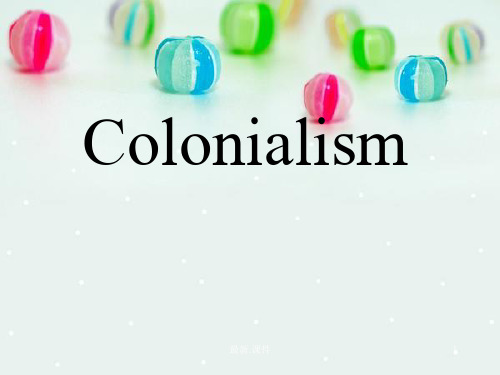
territory by people from another territory. It is a
process where a foreign state claims
sovereignty over the colony and the social
structure, government, and economics of the colony
• Modern colonialism started with the Age of Discovery. Portugal and Spain discovered new lands across the oceans and built trading posts. For some people, it is this building of colonies across oceans that differentiates colonialism from other types of expansionism.
are changed by colonizers. Colonialism is a set of
unequal relationships between the metropole (hub
state) and the colony and between the colonists and
the indigenous population.
• This period is also associated with the Commercial
Revolution. The late Middle Ages saw reforms in
accountancy and banking in Italy and the eastern
西方文明史(第五章)第一章 课件[46页]
![西方文明史(第五章)第一章 课件[46页]](https://img.taocdn.com/s3/m/0215ea82ad51f01dc281f1ca.png)
IV. THE HELLENISTIC WORLD
• Urban life and culture • Alexandria • Hellenistic philosophy
• Cynics • Epicureans • Stoics
QUESTIONS FOR REVIEW
• What social and geographic factors shaped the Greek culture in the age of the Iliad and the Odyssey?
I. BEFORE CIVILIZATION
• Mesopotamia • The Nile • The Hebrew • The Assyrian Empire • The Babylonian Empire
• The origins of humankind • The Paleolithic era (Old Stone Age, ca. 600.000-10,000 B.C.E.) • The dominance of culture • Social organization, agriculture and religion
• The Etruscans formed the most powerful nation in pre-Roman Italy. They created the first great civilization on the peninsula, whose influence on the Romans as well as on present-day cultureis increasingly recognized. Evidence suggests that it was the Etruscans who taught the Romans the alphabet and numerals, along with many elements of architecture, art, religion, and dress.
最新版西方文明史精品课件Chapter 2 The Roman Republic
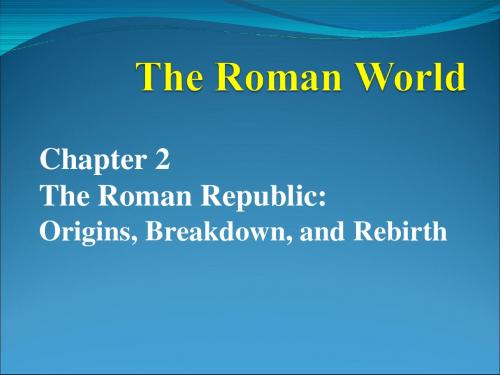
Decline of the Republic
Internal conflict between rich and
poor Governing of the enormous empire A new system of military recruitment giving much power to individual generals
Symbols of Royalty
ivory chair purple robes fasces 束棒
Roman Republican Government
II. The Senate - about 300 members of noble or patrician class. A. Senators appointed for life, must have held elected office before. B. Appointed commanders, assigned funds, but could not pass laws. C. Originally “elected” kings, had a conservative effect on Roman culture and politics.
Roman Republican Government
Three Part Government: I. Executive Branch – Two consuls with right to command troops. Highest civil and military magistrates. A. Elected annually by Assembly of the Centuries B. In emergencies, a dictator could be elected for six months. C. Veto of one consul would halt a motion made by either one.
最新西方文明史精品课件Part I-The Greek World-for students
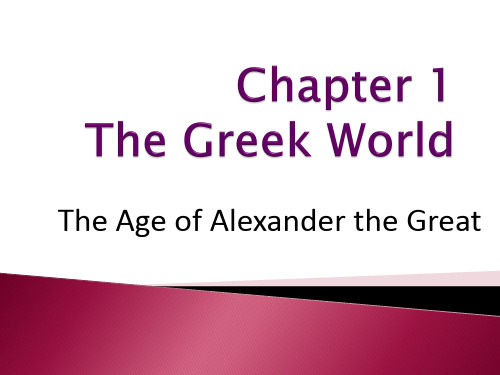
In defining “right action,” Aristotle offers his Doctrine of the Mean, which serves as a guide toward achieving moral virtue and happiness. 在对“正确的行为”下定义时,亚里士多德 提出中庸的观点。中庸被看做是实现道德德 性和幸福的向导。
Plato’s
doctrine is founded on the belief that there are two worlds, one we can readily see and experience with our senses, and the other unseen and eternal.
Athens
Sparta
Great Athenian Philosophers
• 苏格拉底(Socrates) - Know thyself! - question everything - only the pursuit of goodness brings happiness.
Great Athenian Philosophers • 柏拉图(Plato) - The Academy(雅典学院) - Theory of Ideas (理念论) - The Republic(理想国) philosopher-king (哲学王)
柏拉图的教义基础是两个世界并存的信念。 一个世界是我们正在看到且用感官能感知的 世界,另一个世界则是看不见的、是永恒的。
“Until philosophers are kings or the kings and rulers of this world have the spirit of philosophy, until political power and wisdom are united … states will never have rest from their evils, nor … will the human race.”
西方古典文明PPT课件

5、一个在公民大会上自由发言的男人。具有这种民主制的国家或城邦是( )
A.雅典
B.斯巴达 C.罗马共和国
D.法兰克王国
6、一位历史学家曾说:“如今有个趋势,人们怀念它的民主思想,并将其视为
西方民主的开端”。这里所说的“它”是指( )
A.古埃及 B.古罗马 C.斯巴达 D.雅典
7、西方有一句谚语“辉煌属于希腊,宏伟属于罗马”。其中希腊的“辉煌”很
.
No Image
二、罗马帝国的兴衰(古罗马)
.
1.罗马城
罗马城建立的时间、地点? •公元前8世纪中期,在意大利半岛中部
.
2.罗马共和国
罗马共和国建立的时间?
法
•公元前509年
西
罗马共和国的共和制度
斯
•人民大会和元老院
元老院是共和国权力最大的国家机构
•执政官、大法官、监察官和保民官等高级官吏
古希腊雅典城邦的民主制度与罗马共和国的 共和制度有什么不同?
A. 君主专制政治达到最高峰
B. 中央集权达到高峰
C. 奴隶主民主政治达到高峰
D. 军事独裁达到高峰
10、“我们的制度之所以被称为民主政治,因为政权是在全体公民手中,而不
是在少数人手里。”这一“制度”出现于古代( )
A.埃及
B.巴比伦
C.阿拉伯
D.雅典
11、在古希腊文中,“民主政治”一词由“人民”和“统治”复合而成。这体现
A. 罗马帝国的征服和统治充满暴力
B. 当时有很多人在罗马学习、生活
C. 罗马文化渗入到它统治过的广大地区
D. 罗马帝国为了向外扩张修建了许多道路
.
20
在世界文明的交响乐曲中,不同文明的交流
- 1、下载文档前请自行甄别文档内容的完整性,平台不提供额外的编辑、内容补充、找答案等附加服务。
- 2、"仅部分预览"的文档,不可在线预览部分如存在完整性等问题,可反馈申请退款(可完整预览的文档不适用该条件!)。
- 3、如文档侵犯您的权益,请联系客服反馈,我们会尽快为您处理(人工客服工作时间:9:00-18:30)。
Jesuits
• Spain and Portugal are very Catholic • They used their Jesuit priests to convert the natives • Their churches were called missions • They also served as mini-hospitals
• Modern colonialism started with the Age of Discovery. Portugal and Spain discovered new lands across the oceans and built trading posts. For some people, it is this building of colonies across oceans that differentiates colonialism from other types of expansionism. • This period is also associated with the Commercial Revolution. The late Middle Ages saw reforms in accountancy and banking in Italy and the eastern Mediterranean. These ideas were adopted and adapted in western Europe to the high risks and rewards associated with colonial ventures.
Portuguese Empire
• Its biggest colony was Brazil • Brazil had perfect spoil for agriculture, had wood (brazil wood), sugar, and gold. • Portuguese brought African slaves and used natives as labor • Justified conquest of Brazil with Christianization of the people
British Colonialism
• • • • • • • • America Africa Australia Canada India/Pakistan Malaysia Hong Kong Gibraltar
The British Empire, established over the course of three centuries, began in the late 16th century with chartered commercial ventures in sugar and tobacco plantations, slave trading, and missionary activities in North America and the Caribbean Islands. During the late 19th and early 20th centuries, the British Empire reached the height of its power, ruling over large parts of Africa, Asia, and North America.
Manila, Philippines
• Manila is the capital and largest city of the Philippines. The Pasig River divides Manila between the original city, on its southern bank, and the more modern section, on its northern bank. Spanish colonists founded the city in 1571, and Spanish influence is apparent in the old district’s architecture.
European expansion
Premises:
– Monarchy centralized (money support) – The development of technology and science (shipping) – The appearance of “ptolemy map” (15th Europe, 8th Arab) – More resources, a larger population and strategic locations increased potential military and political strength
Religious Freedom
• After the fall of the Roman Empire, many parts of Europe began to become less civilized again (especially in the north). • The Church retained much control through religion, and churches were often strongholds against marauders(抢劫者). • After the separation of the Church into Roman Catholicism and Protestant, many bloody wars and persecution happened within countries. • Spanish Inquisition
Colonialism
Context
• The general introduction about colonialism • The colonial policy of different countries
The earlier period: Spain and Portugal The latter period: British and France
The Philippines
• In the mid-16th century, Spaniards settled some of the many islands in the Philippines, which were named in honor of Spanish King Philip II. This photo shows a village on northern Luzon, the largest island and the second settled by Spain.
European expansion
Motivated by:
– Need to settle excess population – Search for wealth (trade、mineral sources) – The description about the outside world in literary works – Intellectual curiosity, the spirit of adventure – Struggle for dominance of the sea – Religious reasons
Declaration of Peruvian Independence
• Argentine soldier José de San Martí n took charge of Peru’s struggle for independence in 1820. The following year he occupied Lima and on July 28, 1821, he proclaimed Peru’s independence from a balcony in the center of Lima.
Spanish Empire
By colonizing the Americas, Spain became one of the richest and most powerful countries of the 16th century. At the height of its power in 1588, the Spanish Empire included the West Indies, Cuba, Florida, Mexico, Central America, much of South America, and the Philippines.
Portuguese Empire
• Portugal was always the smaller brother to Spain • Very wealthy through trade • It was too small to defend such a big empire (African and South America) • England, Holland & France easily captured many Portuguese territories
Types of colonialism
• Settleቤተ መጻሕፍቲ ባይዱ colonialism
• Exploitation colonialism • Plantation colonialism
• Surrogate colonialism
• Internal colonialism
Age of Discovery
Joséde San Martí n
